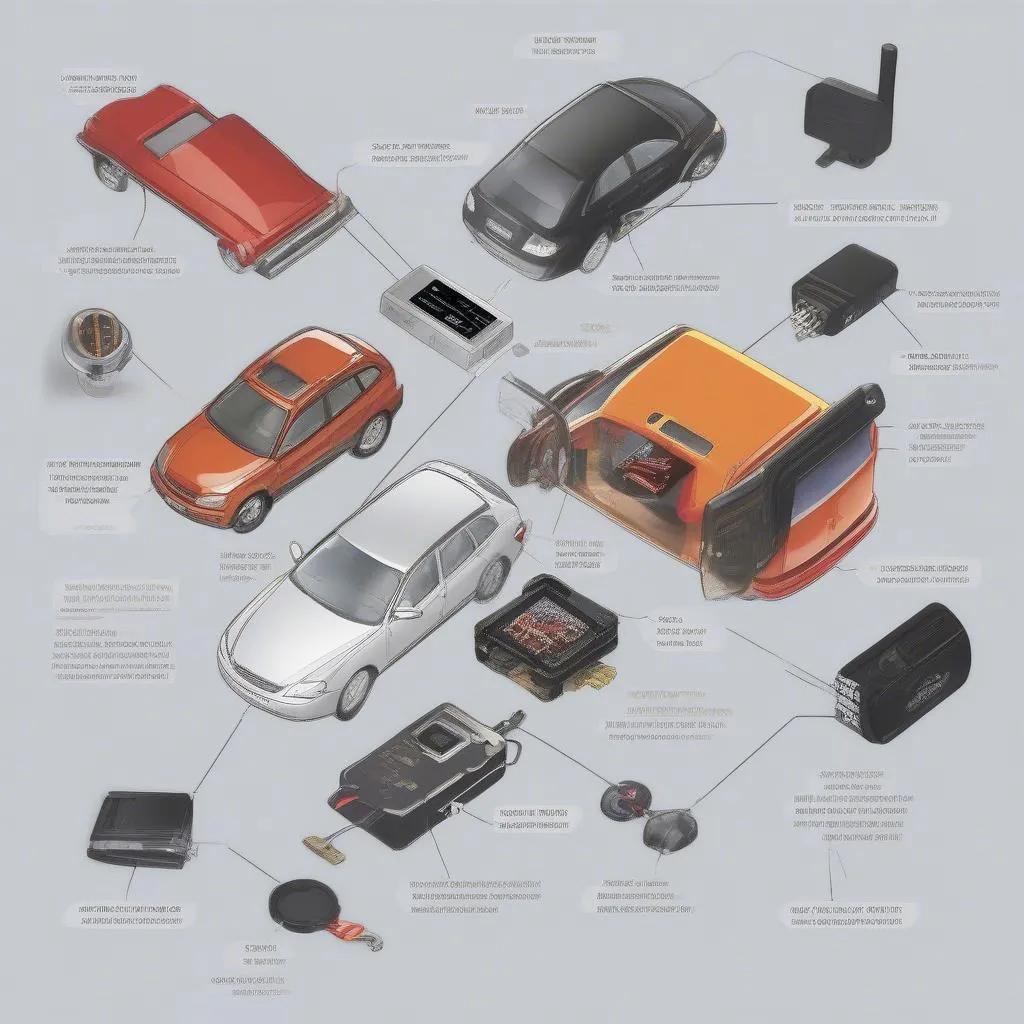VCDS airbag coding is a crucial aspect of vehicle safety and repair. Understanding how to properly diagnose, clear fault codes, and recode airbag modules is essential for both professional technicians and DIY enthusiasts. This guide will delve into the intricacies of VCDS airbag coding, offering practical advice and solutions for common issues.
After a collision or during routine maintenance, the airbag system in your vehicle may require recoding. This process involves using a specialized diagnostic tool, such as the Ross-Tech VCDS, to access the airbag control module and adjust its settings. Incorrect coding can lead to malfunctioning airbags, posing a significant safety risk. Similar to ross tech vcds codes, understanding the specific codes related to airbags is paramount.
Understanding VCDS and Airbag Systems
The VCDS (VAG-COM Diagnostic System) is a powerful diagnostic and coding tool specifically designed for Volkswagen, Audi, Seat, and Skoda vehicles. It allows users to access various control modules, including the airbag module, to read and clear fault codes, perform adaptations, and recode modules. Airbag systems themselves are complex networks of sensors, modules, and airbags designed to deploy in the event of a crash, mitigating the impact on occupants.
Common Airbag Fault Codes and Their Meanings
Different fault codes indicate specific issues within the airbag system. For example, a code related to a faulty crash sensor requires a different approach than a code indicating a wiring problem. Understanding these codes is the first step towards effective airbag system repair. Some common codes include those related to faulty seatbelt pretensioners, side airbags, and driver-side airbags.
How to Perform VCDS Airbag Coding
Before attempting any coding, ensure you have the correct coding for your specific vehicle model and airbag module. Incorrect coding can lead to system malfunctions and safety hazards. Accessing the airbag module with the VCDS involves selecting the correct control module from the list of available modules. You’ll then navigate to the “Coding” or “Adaptation” section, depending on the specific task.
Step-by-Step Guide to Airbag Coding with VCDS
- Connect the VCDS interface to your vehicle’s OBD-II port.
- Turn on the ignition.
- Launch the VCDS software on your computer.
- Select the correct vehicle model and control module (Airbag).
- Read the existing coding.
- Enter the new coding.
- Save the new coding.
- Clear any fault codes.
This process, while seemingly straightforward, requires precision and a thorough understanding of the specific coding values. This is quite similar to situations involving vcds controller not responding, which require careful troubleshooting.
Precautions and Safety Measures
Always disconnect the battery negative terminal before working on the airbag system to prevent accidental deployment. Airbag deployment can cause serious injury. Furthermore, ensure you have the correct coding information before making any changes. If you’re unsure about any aspect of the procedure, consult a qualified technician. You can find more specific information related to certain models like the golf mk6 vcds.
Troubleshooting Common VCDS Airbag Coding Issues
Several issues can arise during VCDS airbag coding. These can range from communication errors between the VCDS and the airbag module to incorrect coding values. Understanding these issues and their solutions can save you time and frustration. For instance, a “Controller Not Responding” error might indicate a problem with the connection or the interface itself. Similarly, specific issues can arise when using vcds opel, requiring specialized knowledge.
What to Do When VCDS Won’t Communicate with the Airbag Module
If the VCDS is unable to communicate with the airbag module, check the connection between the interface and the OBD-II port. Ensure the ignition is on. If the issue persists, there might be a problem with the VCDS interface or the vehicle’s diagnostic port. Remember that understanding your specific scan tool, such as a vw vcds scan tool, is essential for effective troubleshooting.
Conclusion
VCDS airbag coding is a critical procedure that requires careful attention and a thorough understanding of the system. Following the correct procedures and understanding the meaning of fault codes are essential for ensuring the proper functioning of your vehicle’s airbag system. Proper coding contributes significantly to passenger safety.
FAQ
-
What is VCDS airbag coding?
VCDS airbag coding is the process of configuring the airbag control module using the Ross-Tech VCDS software. -
Why is airbag coding necessary?
Coding is often required after a collision or during component replacement to ensure proper airbag system function. -
What are common airbag fault codes?
Common codes relate to faulty sensors, wiring issues, and deployed airbags. -
How do I perform VCDS airbag coding?
Connect the VCDS, access the airbag module, read the current coding, enter the new coding, save, and clear faults. -
What are some troubleshooting tips for VCDS airbag coding?
Check connections, ensure the ignition is on, and verify the correct coding for your vehicle. -
Where can I find the correct coding for my vehicle?
Consult your vehicle’s service manual or a reputable online database. -
What safety precautions should I take when working with airbags?
Always disconnect the battery negative terminal before working on the airbag system.
For further assistance, please contact us via WhatsApp: +1 (641) 206-8880, Email: CARDIAGTECH[email protected] or visit us at 276 Reock St, City of Orange, NJ 07050, United States. Our customer support team is available 24/7. You can also find additional helpful resources on our website, including articles on various VCDS-related topics.

